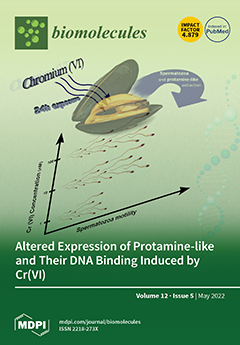Although the discovery of immune checkpoints was hailed as a major breakthrough in cancer therapy, generating a sufficient response to immunotherapy is still limited. Thus, the objective of this exploratory, hypothesis-generating study was to identify potentially novel peripheral biomarkers and discuss the possible
[...] Read more.
Although the discovery of immune checkpoints was hailed as a major breakthrough in cancer therapy, generating a sufficient response to immunotherapy is still limited. Thus, the objective of this exploratory, hypothesis-generating study was to identify potentially novel peripheral biomarkers and discuss the possible predictive relevance of combining scarcely investigated metabolic and hormonal markers with immune subsets. Sixteen markers that differed significantly between responders and non-responders were identified. In a further step, the correlation with progression-free survival (PFS) and false discovery correction (Benjamini and Hochberg) revealed potential predictive roles for the immune subset absolute lymphocyte count (rs = 0.51;
p = 0.0224 *), absolute basophil count (rs = 0.43;
p = 0.04 *), PD-1+ monocytes (rs = −0.49;
p = 0.04 *), hemoglobin (rs = 0.44;
p = 0.04 *), metabolic markers LDL (rs = 0.53;
p = 0.0224 *), free androgen index (rs = 0.57;
p = 0.0224 *) and CRP (rs = −0.46;
p = 0.0352 *). The absolute lymphocyte count, LDL and free androgen index were the most significant individual markers, and combining the immune subsets with the metabolic markers into a biomarker ratio enhanced correlation with PFS (rs = −0.74;
p ≤ 0.0001 ****). In summary, in addition to well-established markers, we identified PD-1+ monocytes and the free androgen index as potentially novel peripheral markers in the context of immunotherapy. Furthermore, the combination of immune subsets with metabolic and hormonal markers may have the potential to enhance the power of future predictive scores and should, therefore, be investigated further in larger trials.
Full article






